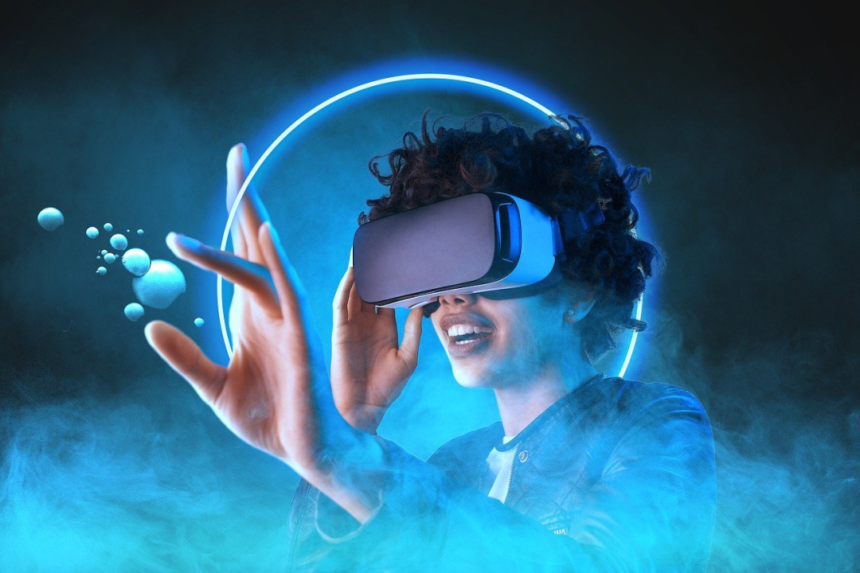Technology has transformed the way we interact with the world, and two of the most innovative advancements in recent years are virtual reality (VR) and augmented reality (AR). These technologies have reshaped industries, from gaming and entertainment to education and healthcare, offering immersive experiences that were once confined to science fiction.
Virtual reality is a technology that creates a fully immersive digital environment, completely replacing the real world. By wearing VR headsets, users can explore and interact with a simulated world that feels real. On the other hand, augmented reality enhances the physical world by overlaying digital elements onto real-world environments. AR applications are accessible through smartphones, tablets, or specialized AR glasses.
The Evolution of Virtual Reality
The concept of Virtual Reality has been around for decades, but significant technological advancements have made it more accessible and practical. Early VR systems were bulky, expensive, and primarily used for military training and research. However, with the rise of powerful computing and affordable VR headsets like the Oculus Rift, HTC Vive, and PlayStation VR, the technology has become mainstream.
The gaming industry was among the first to embrace VR, creating lifelike experiences that immerse players in digital worlds. Developers have since expanded VR’s capabilities, integrating it into simulations, virtual tourism, and even therapy. The continuous evolution of VR hardware and software has made it possible for users to experience hyper-realistic virtual spaces, transforming the way people interact with digital content.
The Role of Augmented Reality in Daily Life
Unlike VR, which transports users into a digital space, AR enhances real-world environments by overlaying digital elements. One of the earliest and most famous examples of AR is the mobile game “Pokémon GO,” which allowed players to interact with virtual characters in real-world locations. Since then, AR has evolved significantly and is now integrated into various applications, including navigation, education, retail, and healthcare.
AR applications like Google Lens and Apple ARKit allow users to visualize products before purchasing, scan text for instant translation, and access information about objects simply by pointing their device’s camera. The potential for AR to improve efficiency, engagement, and accessibility in various industries continues to grow.
How Virtual Reality is Changing Industries

1. Gaming and Entertainment
The gaming industry has been one of the biggest beneficiaries of VR technology. VR gaming provides an unparalleled level of immersion, making players feel like they are inside the game world. Titles such as “Half-Life: Alyx” and “Beat Saber” have demonstrated the potential of VR to create engaging and interactive experiences.
Beyond gaming, VR is revolutionizing the entertainment industry by offering virtual concerts, interactive storytelling, and immersive cinematic experiences. Platforms like VRChat and Meta Horizon Worlds allow users to socialize in a virtual space, further expanding the reach of VR beyond traditional gaming.
2. Education and Training
Virtual reality is proving to be a game-changer in education and professional training. Schools and universities are incorporating VR to create interactive lessons that enhance student engagement and understanding. From virtual science labs to historical reconstructions, VR enables students to learn in an immersive and practical way.
Industries such as aviation, medicine, and manufacturing use VR simulations for training purposes. Pilots practice flight procedures, surgeons perform virtual operations, and factory workers undergo safety training in risk-free environments, reducing errors and improving skill development.
3. Healthcare and Therapy
The healthcare industry has embraced VR as a tool for diagnosis, treatment, and therapy. VR is used for exposure therapy, helping patients with phobias and PTSD confront their fears in controlled environments. It is also being utilized in pain management, where patients immerse themselves in calming virtual environments to reduce discomfort during medical procedures.
Furthermore, VR simulations assist in surgical planning, allowing doctors to practice complex procedures before performing them on real patients. This enhances precision and reduces risks associated with surgeries.
The Future of Augmented Reality
The potential of augmented reality extends far beyond entertainment. With advancements in AR glasses and wearable technology, the line between the physical and digital worlds continues to blur. Companies like Apple, Microsoft, and Google are investing heavily in AR development, aiming to create seamless integration between digital content and real-world experiences.
In retail, AR allows customers to try on clothes virtually, see how furniture fits in their homes, and visualize products before purchasing. In navigation, AR-powered apps like Google Maps provide real-time directions by overlaying information onto streets and buildings. The adoption of AR in marketing and advertising has also opened new opportunities for brands to engage with consumers in interactive ways.
The Challenges and Limitations of VR and AR
Despite their incredible potential, VR and AR face several challenges. VR headsets remain relatively expensive, limiting accessibility to a broader audience. Additionally, prolonged VR use can cause motion sickness and discomfort, making it difficult for some users to enjoy long sessions.
AR, while more accessible, struggles with hardware limitations. Current AR glasses are bulky and expensive, and smartphone-based AR experiences have yet to reach their full potential due to processing power constraints. Furthermore, the integration of AR into daily life requires robust connectivity, which is not yet universally available.
Conclusion: The Road Ahead for Immersive Technologies
Virtual Reality and Augmented Reality have already transformed various industries, and their impact will continue to grow as technology advances. With the development of more powerful and affordable hardware, VR and AR will become even more accessible, opening doors to new possibilities.
As industries continue to explore innovative applications, we can expect immersive technologies to play a greater role in shaping the future of work, education, healthcare, and entertainment. The fusion of the digital and physical worlds is just beginning, and the next decade promises groundbreaking advancements in VR and AR that will redefine how we experience reality.
